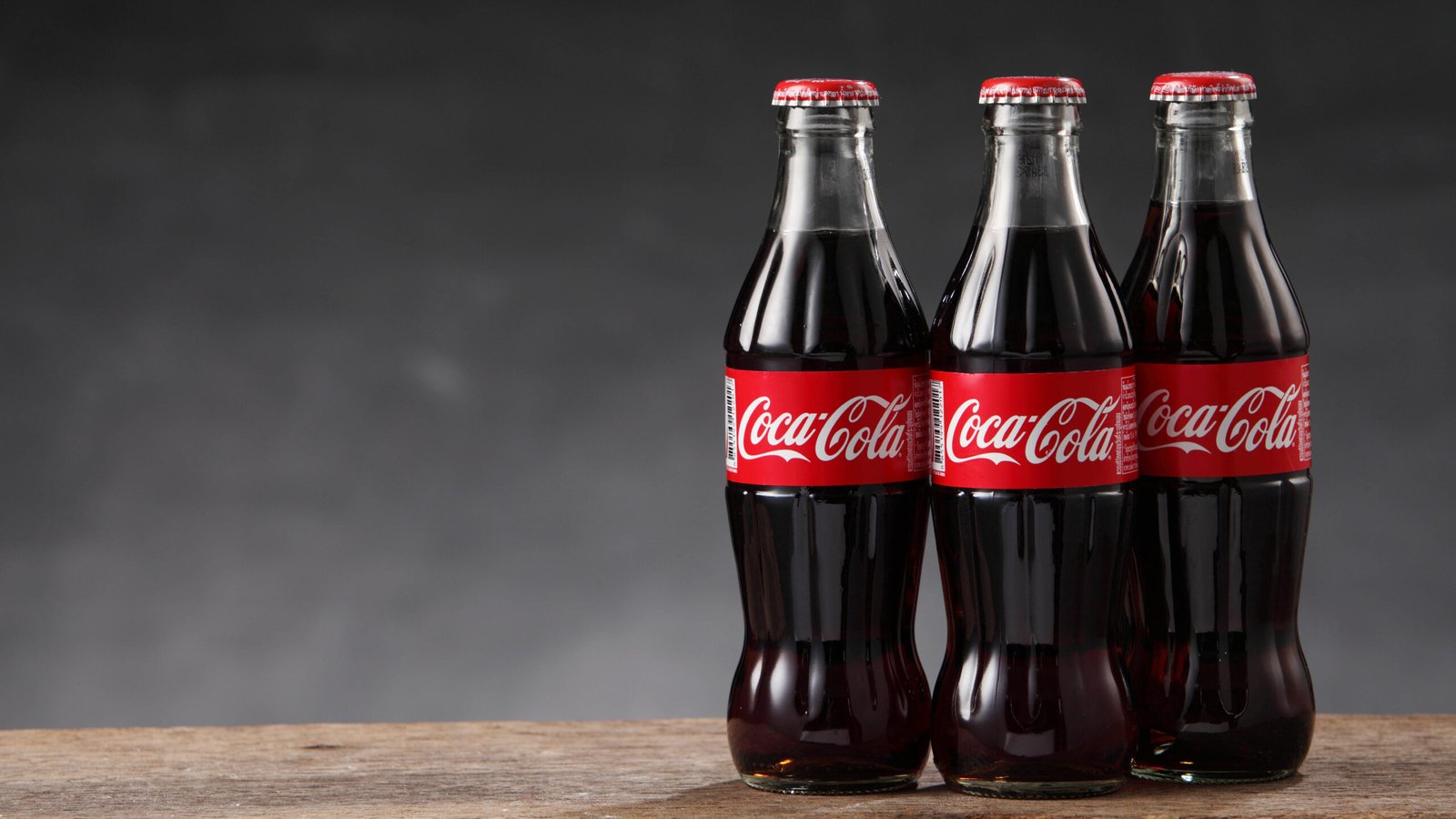Coca-Cola was invented in 1886 by John Stith Pemberton, a pharmacist from Atlanta, Georgia. Originally formulated as a medicinal tonic, it contained cocaine from the coca leaf (which was later removed in 1904) and caffeine from the kola nut, which is how the drink got its name. Pemberton’s original concoction was marketed as a cure for common ailments like headaches and exhaustion. https://clicpagado.blogspot.com/2024/04/coca-cola.html
The true rise of Coca-Cola began when businessman Asa Candler bought the formula and brand from Pemberton in 1891. Candler’s aggressive marketing strategies were pivotal in transforming Coca-Cola from a local curiosity to a national sensation. By the early 20th century, Candler had built Coca-Cola into a household name in the United States.
In 1919, the company was sold to a group of investors led by Ernest Woodruff, and in the following years, Coca-Cola expanded internationally, gradually becoming the most famous soft drink in the world.
Iconic Branding and Marketing: The Coca-Cola Formula for Success
One of the key reasons Coca-Cola has maintained its position as a market leader is its relentless focus on branding and marketing. From its very inception, Coca-Cola’s advertising campaigns have shaped public perceptions and created emotional connections with consumers.
The Birth of the Coca-Cola Bottle
The Coca-Cola bottle is one of the most recognizable designs in the world. In 1915, the company sought to create a bottle that would distinguish Coca-Cola from its competitors. The result was the iconic contour bottle, designed by the Root Glass Company in Terre Haute, Indiana. This bottle design became a symbol of the brand and has endured for over a century as an instantly recognizable packaging.
Advertising Campaigns: Selling Happiness
Coca-Cola has long been associated with feelings of happiness, joy, and refreshment. Its advertisements often feature smiling people, festive occasions, and moments of togetherness. One of the most famous slogans, “Have a Coke and a Smile,” encapsulates the brand’s message of spreading joy through a simple, refreshing beverage.
In 1971, Coca-Cola launched its iconic “Hilltop” commercial with the jingle “I’d Like to Buy the World a Coke.” The ad became a cultural phenomenon, emphasizing peace, unity, and Coca-Cola as a universal symbol of togetherness. This campaign reinforced Coca-Cola’s position as more than just a drink—it was presented as a force for good that could bring people together from all walks of life.
Another memorable campaign is the annual Coca-Cola Christmas advertisement featuring Santa Claus. Coca-Cola’s depiction of Santa in the 1930s, created by artist Haddon Sundblom, helped to shape the modern image of Santa Claus as a jolly, red-suited figure. Coca-Cola’s Christmas commercials have since become a tradition, adding to its emotional resonance with consumers.
“Share a Coke” Campaign
In 2011, Coca-Cola launched the “Share a Coke” campaign in Australia, printing people’s names on bottles and encouraging consumers to “share” their Coke with friends and loved ones. The campaign was a massive success, leading to increased sales and consumer engagement. This personalized marketing approach was later rolled out worldwide, solidifying Coca-Cola’s image as a brand that fosters personal connections and meaningful interactions.
Global Expansion and Market Dominance
Coca-Cola’s international expansion began in the early 20th century, and by the mid-1900s, the brand had established itself in nearly every country across the globe. Its presence became so widespread that during World War II, Coca-Cola promised to supply every American soldier with a Coke, wherever they were. This strategy not only provided comfort to troops but also helped establish the brand in new markets worldwide.
Today, Coca-Cola is available in over 200 countries, with over 1.9 billion servings consumed daily. The company’s product line has expanded beyond its flagship Coca-Cola Classic to include Diet Coke, Coca-Cola Zero, and an array of other beverages, including Fanta, Sprite, and Dasani water.
Coca-Cola and American Culture
Coca-Cola has always been more than just a soft drink—it is deeply embedded in American culture. Over the decades, it has been a symbol of American values such as optimism, freedom, and innovation. In the mid-20th century, Coca-Cola was often featured in films, music, and television, further cementing its place in pop culture. The drink became an emblem of post-war American prosperity and global influence.
During the Cold War, Coca-Cola’s international reach was viewed as a symbol of capitalism and Western values. Its presence in countries behind the Iron Curtain, like East Germany and the Soviet Union, was seen as a sign of soft power, subtly promoting the American way of life.
In 1985, Coca-Cola made a bold move by changing its original formula for the first time in nearly a century, introducing “New Coke.” This decision, however, resulted in widespread backlash from loyal consumers who preferred the original taste. Just months later, Coca-Cola reintroduced the original formula under the name “Coca-Cola Classic,” a move that was widely praised by the public. This incident, though initially perceived as a failure, demonstrated the deep emotional attachment that consumers had to the brand.
Coca-Cola in Global Culture: More Than a Drink
Coca-Cola’s influence extends far beyond American culture. In many countries, the brand has adapted its marketing to fit local tastes and cultural practices while maintaining its global identity.
Coca-Cola in Latin America
In Latin America, Coca-Cola is often seen as a symbol of celebration and community. It is a common sight at family gatherings, parties, and holidays. Coca-Cola has tailored its marketing to reflect Latin American values of togetherness and family. The brand is often associated with moments of joy, such as Christmas or national celebrations, and its ads frequently feature scenes of large families enjoying the beverage together.
Coca-Cola in Africa and Asia
In Africa and Asia, Coca-Cola has faced the challenge of entering markets with unique cultural and economic dynamics. In some regions, Coca-Cola has become a status symbol, representing modernity and success. In rural areas, the brand has adapted its packaging and pricing to make the product accessible to a wider audience.
In countries like India and China, Coca-Cola has positioned itself as both a modern brand and a product that fits within traditional cultural contexts. By creating local campaigns that celebrate national holidays and traditions, Coca-Cola has become more than just an imported product—it has become a part of the local cultural fabric.
Corporate Responsibility and Criticism
Despite its global success, Coca-Cola has faced its share of criticism over the years, particularly regarding health concerns and environmental impact.
Health Concerns
As a sugary beverage, Coca-Cola has been linked to health issues such as obesity, diabetes, and dental problems. In response to growing consumer concerns about sugar intake, Coca-Cola has expanded its range of low-calorie and sugar-free products, including Coca-Cola Zero and Diet Coke. The company has also committed to reducing sugar content in many of its beverages and promoting smaller portion sizes.
Environmental Impact
Coca-Cola has been criticized for its environmental practices, particularly regarding plastic waste. As one of the largest beverage companies in the world, Coca-Cola produces billions of plastic bottles annually, contributing to the global plastic pollution crisis. In response, Coca-Cola has made efforts to improve its environmental sustainability, launching initiatives to increase recycling rates, reduce water usage, and develop more eco-friendly packaging.
One such initiative is the “World Without Waste” program, through which Coca-Cola has committed to collecting and recycling a bottle or can for every one it sells by 2030. The company is also investing in research to create bottles made entirely from plant-based materials.
Coca-Cola’s Future: Innovation and Sustainability
As the beverage industry continues to evolve, Coca-Cola faces new challenges and opportunities. Consumers are increasingly seeking healthier, more sustainable beverage options, and Coca-Cola is adapting to these trends.
The company has diversified its product portfolio to include water, juice, and tea, catering to a growing demand for non-carbonated beverages. Coca-Cola is also investing in new technologies to create more sustainable packaging and reduce its environmental footprint.
Additionally, Coca-Cola has embraced digital marketing and social media to connect with younger consumers. Through platforms like Instagram, Twitter, and TikTok, the brand continues to engage with audiences and maintain its relevance in a fast-changing digital landscape.
Conclusion
Coca-Cola is more than just a soft drink—it is a cultural icon, a global business leader, and a symbol of innovation and consumerism. Its history, from humble beginnings in a pharmacy to its current status as a global giant, reflects its ability to adapt and thrive in an ever-changing world. Whether through its iconic advertising campaigns, its role in shaping American culture, or its efforts to address modern challenges, Coca-Cola remains a powerful force in both the beverage industry and the global cultural landscape.



